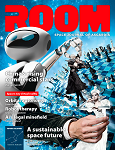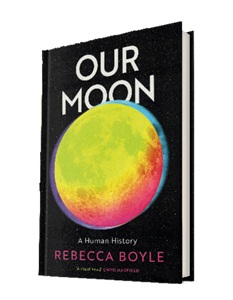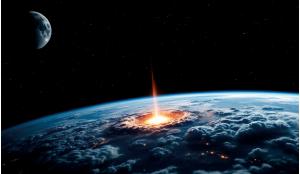There was a time when this reviewer was amazed at the number of books that could be written on the Apollo missions. It seems that they have now been replaced by what one might call books on the culture of the Moon.
This book’s blurb explains that it tells its story in three parts: “how the Moon was made, how the Moon made us, and how we made the Moon in our image”. It states clearly that this is not solely an astronomy book and not an Apollo book, but about “time, life on Earth, human civilization, our place in the universe and how the Moon has made all of it possible”. That’s quite a remit, but it sets the tone well.
The main text begins with an exposition on the problems of lunar dust – which I hadn’t expected – and is both informative and entertaining. Using quotes from the Apollo astronauts, the author goes on to explain colour, light, shadows and the optical illusions caused by them. In just a few pages, she educates her audience on the basics of the lunar day, lunar seismology and the difficulties of walking on the Moon… and all without breaking a sweat. I can’t say how this might come across to a non-technical reader, but this reasonably knowledgeable Apollo-phile was suitably impressed.
Moreover, having been fascinated by Alfred Wegener’s hypothesis of continental drift since my schooldays, I was equally fascinated to learn that he’d published his experimental results on the impact theory of crater formation (as opposed to volcanic origins) as early as 1921. The author has a way of weaving in elements of science, history, sociology and other themes as if they fit naturally together, which is a rare skill. It’s almost as if CP Snow’s “The Two Cultures” never existed!
The book has chapter notes, a bibliography and, importantly, an index and is illustrated with two eight-page colour inserts. As testified to in the acknowledgments (which must list a hundred individuals), it was far from the product of one person’s efforts, but that’s often the case for multidisciplinary texts such as this.
Perhaps the increase in the number of books on ‘lunar culture’ reflects a recognition of the importance of our near neighbour; alternatively, it may be a substitute for real lunar action, like air rushing into an evacuated airlock. I hope that the pendulum will soon start on its return swing, but I also celebrate such efforts to weave the two cultures together.











